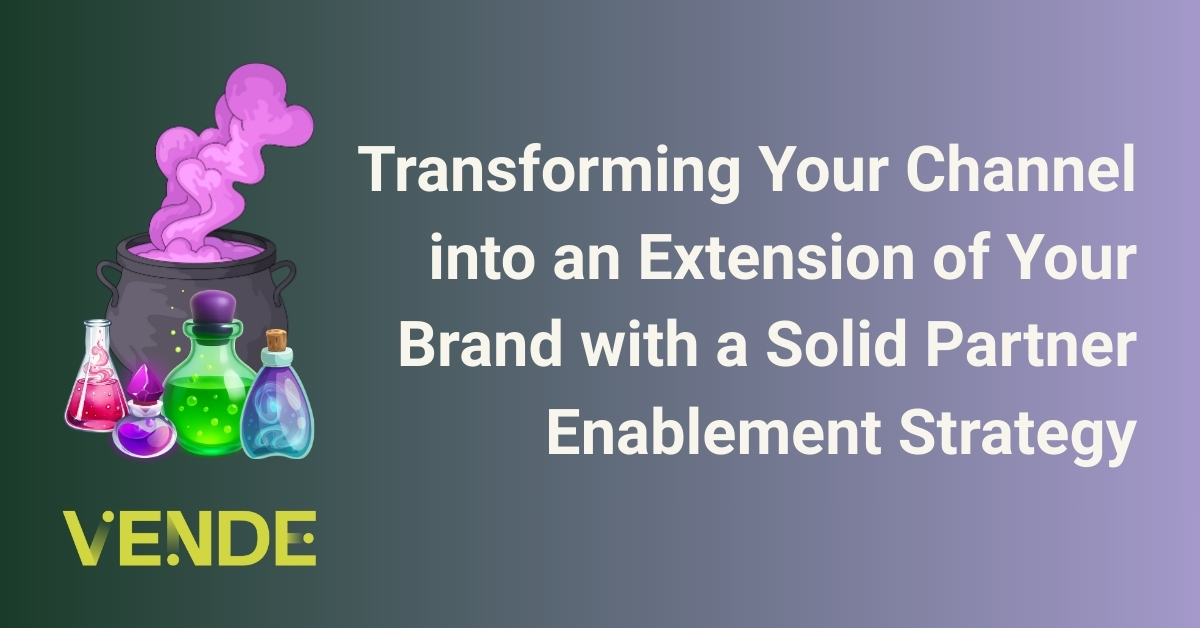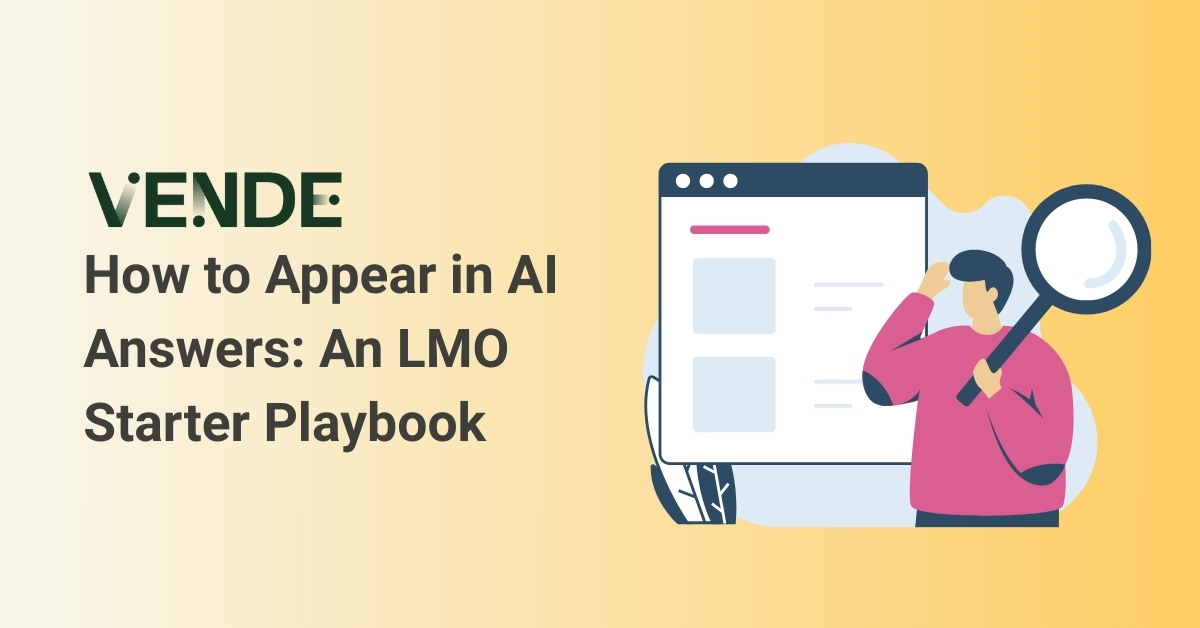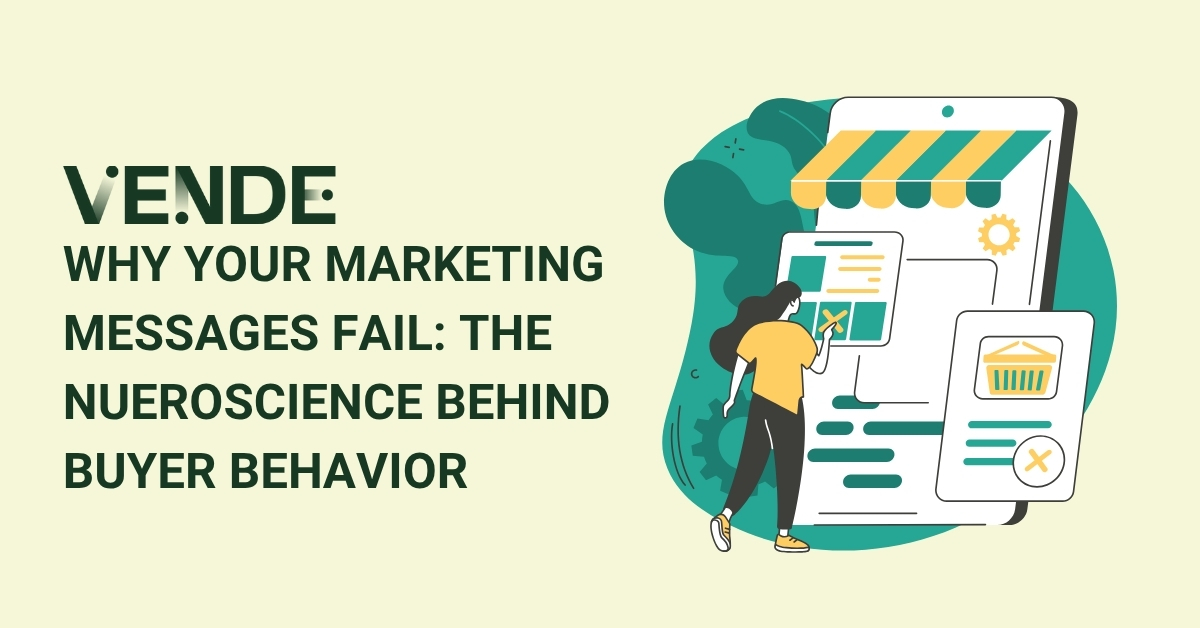
New Privacy Changes and B2B Advertising: Where to Focus Now
Many B2B marketers are concerned about the impact online privacy changes, including Apple's iOS 14.5 release earlier this year and the depreciation of 3rd party cookies coming soon, will make to their digital advertising and marketing efforts.
Impacts on the collection and use of personal information have been a focus for both governments and platforms alike since 2017. The chart below summarizes some of the major privacy-related changes and regulations.
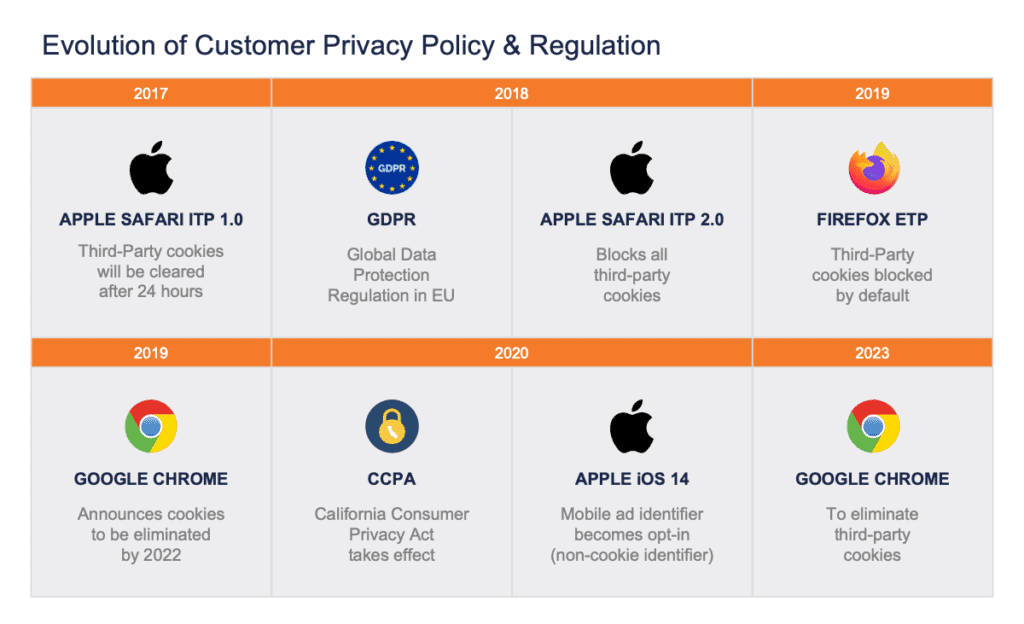
Deep Breath Moment: This Isn’t the End of B2B Digital Advertising.
Yes, some tactics will be heavily impacted by the iOS 14.5 update and the depreciation of cookies; however, most tactics that are important to B2B marketers will remain pretty much the same.
In this article, we'll show you how to make a few tweaks now that will not only set you up for success but will also enable you to better serve the very prospects you are trying to reach.
What Exactly Is Changing?
Access to user behavior data on third-party sites will not be as available as it has been in the past. Why? Historically 3rd party cookies (browser tracking) and user identification (phone tracking) have been key dependencies for advertising and are being depreciated to improve users' online privacy.
To be clear, this user data isn’t gone. It’s just no longer shared between sites (see image below). You will still be able to reach and track users on your own site(s) and channels where users congregate.
What Privacy Changes Are Going to Impact My B2B Company?
What’s changed is the level publishers and advertisers can track users from one site to another. A big drawback here will be that this data will now live largely in “walled garden” silos making cross-channel targeting/tracking almost impossible.
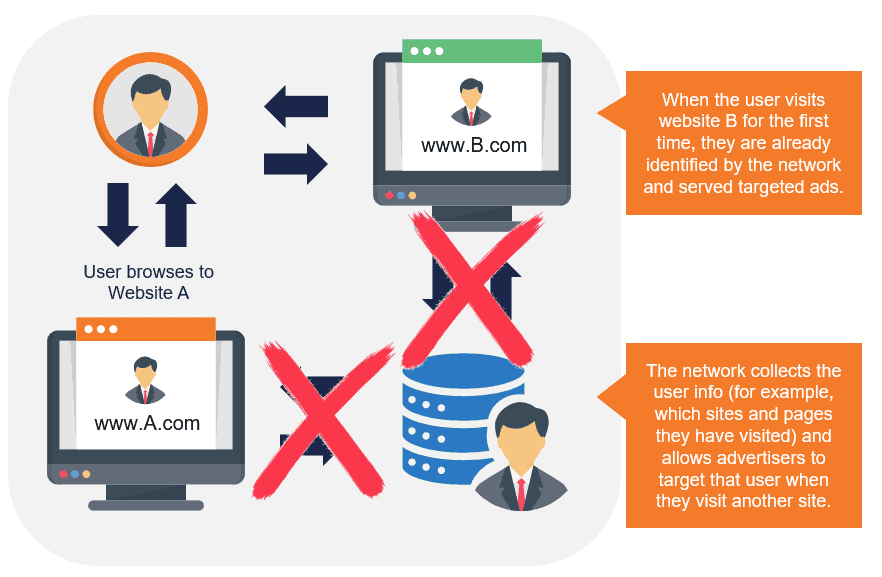
The two 800lb gorillas in the world of user access and identity, Google with chrome and android and Apple with safari and iOS, have discovered the value (i.e., profiteering opportunities) in controlling this access and data under the guise of “privacy.” Soon you’ll have to go to the throne of Google and Apple (or anywhere else your users congregate) and comply (i.e., pay) for use of this data.
The bet these channels are making is that, as advertisers, we will choose to invest more money in a single channel vs. spreading it across multiple channels, enabling them to capture a larger share of our advertising budgets. We will be forced to ask ‘what is the biggest pond (channel) to fish in?’ and then go all-in with our advertising dollars.
What Will be Impacted?
Advertising and attribution solutions that leverage data collected by third parties across multiple websites will be impacted the most. This includes:
- Digital Identity Collected by a Third-Party - There is no doubt that this has been useful to understand who is engaging with your ads or who to target. However, since the data isn’t collected from you directly and is also available to your competitors, it's up for debate how valuable it actually is.
- Cross-Platform Ad Targeting - The ability to effectively target users based upon behavior across multiple websites. This will impact tactics that rely on 3rd party data like retargeting, socio-demographic, affinity, interest, and intent/in-marketing targeting.
- Reporting and Attribution - The ability to track and credit outcomes end-to-end based upon digital marketing investments (paid or organic). For example, assisted conversions, view-through conversions, and some email reporting.

What Will NOT be Impacted?
The good news is that there are still many ways to connect and engage prospects with B2B digital advertising and marketing regardless of privacy, iOS 14.5, and the demise of the cookie:
- Your First-Party Data - First-Party data will continue to be the foundation for marketing to prospects. This includes your website users, email lists, webinar registrations, CRM/marketing automation contacts/records, etc. Since users who opt-in to your email list have given you permission to market to them, growing your email list will need to become a primary tactic to grow your First-Party data.
- First-Party Cookies - These are cookies from your own domain that enable your website to track and remember users. First-Party cookies are still effective for website personalization and marketing automation.
- Other First-Party Data - This also includes websites that provide access to their First-Party data (Social platforms, Search Engines, industry websites/newsletters, podcasts, influencers, etc.). You will still be able to run ads and target users directly on these platforms.
- First-Party Retargeting - Sites like LinkedIn and Facebook offer First-Party retargeting via their pixel. With their pixels installed on your website, you can still serve ads on these platforms to individuals who visited your website.
- Engagement Retargeting - You will still be able to retarget users who interact with your ads on social platforms (for example: engaged with a social post, watched a video, clicked a link in a social post)
- Syncing your First-Party Data with Other First-Party Data - You can still upload your emails lists, and target account lists to sites like Linkedin, Google, and Facebook to target users on their platforms.
- IP Targeting - IP Targeting allows you to target users at a physical location (business, venue, or home) based upon the IP address of the location. For example, if you have the address of targeted accounts, then you can serve display ads to individuals who are connected to their Internet.
- Contextual Targeting - One of the original forms of ad targeting, contextual targeting allows you to serve ads based upon the information on the web page being consumed by the users.
What Can B2B Marketers Do?
Follow this simple 7-Step framework to ensure that your message is getting in front of the right buyers regardless of demise of 3rd party cookies or other privacy-related targeting challenges.
Step 1: Write really, REALLY, good content that helps your prospects solve business problems and achieve their goals. This is what your buyer wants; so start there. Share interesting insights, research, and steps on overcoming challenges. (hint: that’s what this blog is doing). Check out our content marketing resources for more tips.
Step 2: Optimize your content for search engines. SEO needs to be an essential part of your B2B marketing strategy if it isn’t already. According to Google, 89% of B2B buyers will use search engines during the buying process. Find out what’s keeping your website from ranking well in Google with our website audit tool.
Step 3: Advertise your content directly on sites where your prospects go to look for information. For B2Bs this probably means LinkedIn, but could also include Facebook, Twitter, Google, Bing (PPC) and industry-related sites. 40-60% of your advertising budget should be invested here because this is where you will build awareness and drive qualified traffic to your website.
A great place to start would be to upload a target account list or CRM list to these platforms to ensure your content is getting read by your target audience. On LinkedIn, you can also combine this with an audience selection based upon industry, role, geography, etc.
PRO Tip: Install a website visitor analytics tool to show you the companies visiting your website. You can use this information to feed into channels like LinkedIn to expand your targeting.
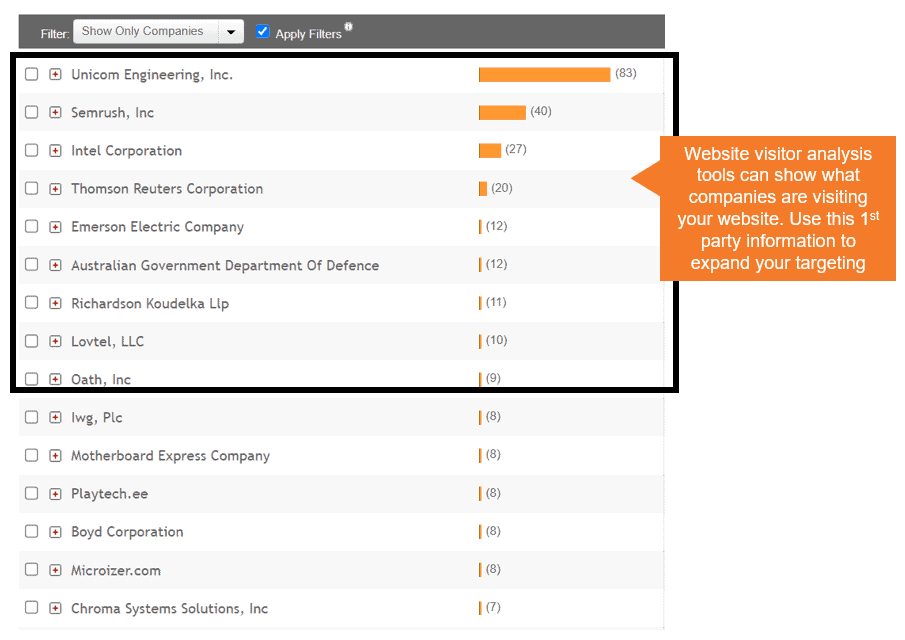
Step 4: Get your sales reps, C-Suite, and Subject Matter Experts (SMEs) to share your content on social media. This will exponentially increase your reach and exposure online. As a bonus, have your sales reps send Direct Messages (DMs) to contacts with links to your content. This is a great way for a rep to engage a prospect via social media without coming across as too salesy. To learn more, download our comprehensive Social Selling Guide here.
Step 5: Develop and promote gated “premium” content that buyers want. Gated content allows you to deliver useful information to your prospect in exchange for information about them, like their email address. This is a great way to build your First-Party email/CRM list. We recommend that you create at least one new gated offer per quarter. Examples include; Guides/How To’s, Checklists, Video Series, and Calculators. Be prepared to offer an “outrageous exchange of value” for a user’s permission to market to them.
Promote your gated content in industry-specific sites, content syndication, and First-Party retargeting ads. This is where you should spend the rest of your advertising budget.
Send emails to your CRM list with links to your “premium” content and have your reps post links on social and via direct messages.

Step 6: Stay top of mind with email. We can’t control when the buyer is ready to buy, but we can control that when they are ready, they think of your company first. Sending out a drip email sequence and weekly emails promoting your content is a great way to leverage this very valuable First-Party data (email address).
Step 7: Call your leads. Following the first 6 steps will get new leads flowing into your marketing system. However, the best source of First-Party data is data you collect by actually talking with prospects. Have your SDRs call and find out firsthand where leads are in their decision journey and put this information in your CRM.
Remember, The Fundamentals Never Change
Advertising and marketing have been around a lot longer than smartphones or cookies. When you own the fundamentals of B2B marketing, you are in a strong position to adjust as the tide turns. For smart marketers, this new cookieless world will create opportunities to capture more attention and market share.
Follow the framework outlined in this article, and you’ll stay ahead of the competition while engaging your prospects with the information they want in channels that matter to them.
Key Takeaways
- Apple's iOS 14.5 update and the demise of cookies will require most B2B companies to adjust their digital marketing strategy.
- There are still many viable ways to target and reach prospects with useful information that will keep you top-of-mind.
- Your primary focus needs to be on growing your own first-party data and collecting permission-based emails from your targeted prospects.
- Developing remarkable content that aids the buyer and connects the dots between their problems and your solution will be key to creating awareness and driving qualified traffic/leads.
